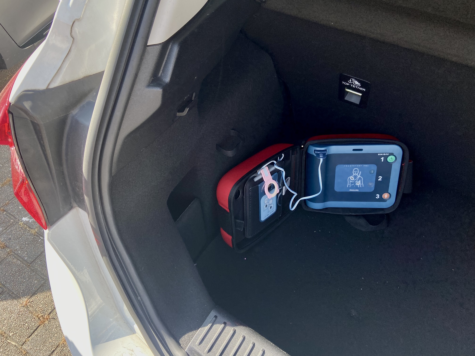The importance of an AED in the car

An emergency always happens unexpectedly and can happen anywhere, including when you are traveling by car. In the event of a cardiac arrest on the road, an Automatic External Defibrillator (AED) is the most valuable device you can have in your car. In this blog post, we talk about the benefits of having an AED in the car and which devices are most suitable for traveling. Carrying an AED in the car is a smart choice for anyone who cares about their safety and the safety of the people around!
Faster response by having an AED in the car
Did you know that most cases of cardiac arrest occur outside of a hospital setting?
One of the biggest benefits of having an AED in the trunk of your car is the ability to respond quickly in the event of a cardiac arrest, such as when a passenger or someone you encounter on the road needs this assistance. Research has shown that using an AED within 6 minutes of a cardiac arrest significantly increases the chances of survival. Additionally, there is also a greater chance of successful CPR, which can also reduce neurological damage.
Socially responsible with an AED in your car
Whether you are taking a long trip, or just doing your daily commute, having an AED in the car gives you the ability to provide life-saving assistance at all times. In an emergency situation, you can still save lives, even if it doesn't directly affect you or your loved ones. By carrying an AED in the car, you create a safe environment for yourself, but also for others!
Which AED is suitable for car transportation?
We recommend choosing a compact, lightweight and easily portable AED. Go for the device that takes up little space in the trunk. Suitable in-car AEDs include the DefiSign Pocket Plus, Philips HeartStart FRx and Heartsine Samaritan PAD.
What to look out for with an AED in the car
When you want to take your AED with you in the car, there are some important points to consider, such as:
- Protection against damage: make sure you keep the AED in a sturdy, protective case to prevent damage. There are several carrying cases available to protect the machine during transport in the car.
- Temperature: it is important to remove the AED from a car parked outside when the temperature drops too low or is too high. In such situations, place the AED somewhere inside and keep it at room temperature.
- Electrodes and battery check-up: an AED runs on batteries and the electrodes have a limited shelf life. Regularly check the battery status and the expiration date of the electrodes. Replace them if necessary to ensure that the device is always ready for use.
- Maintenance and service: like any electronic device, an AED requires regular maintenance. A periodic maintenance check ensures safety and confidence. Check Medisol’s maintenance plans and see what we can offer.